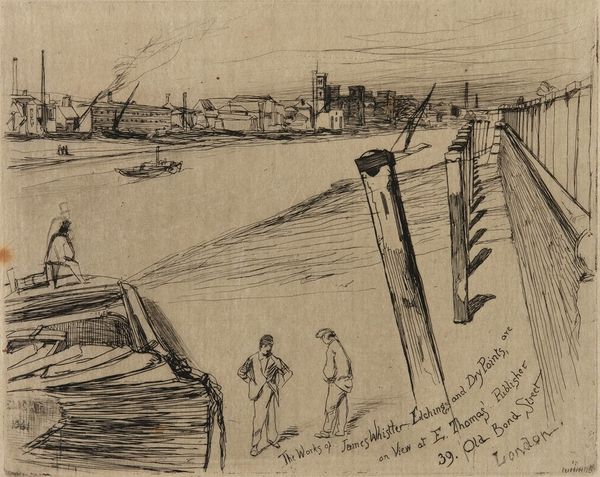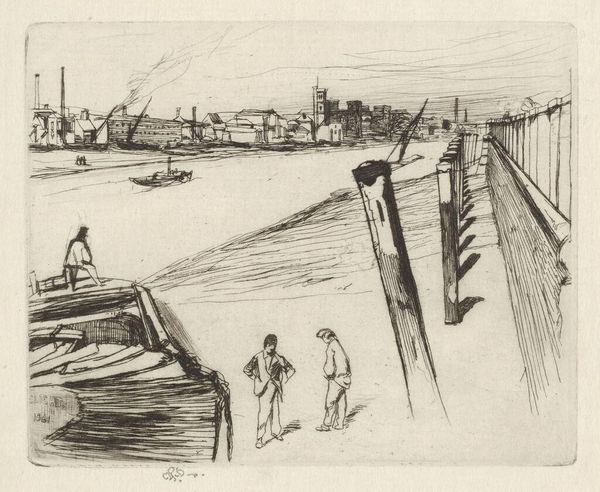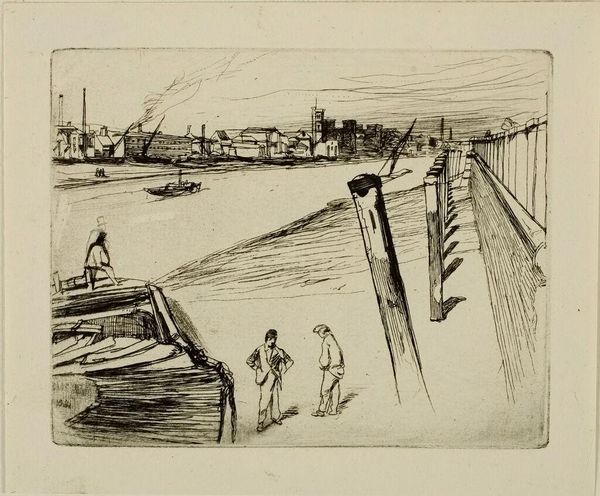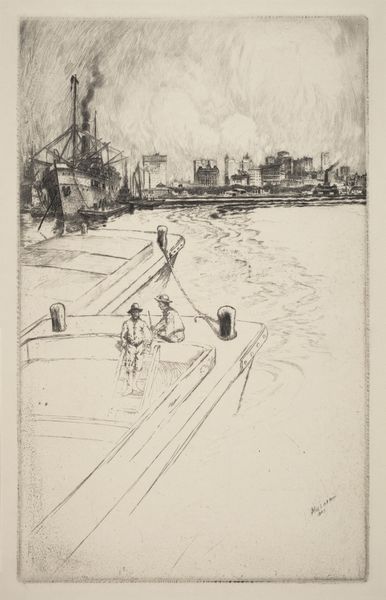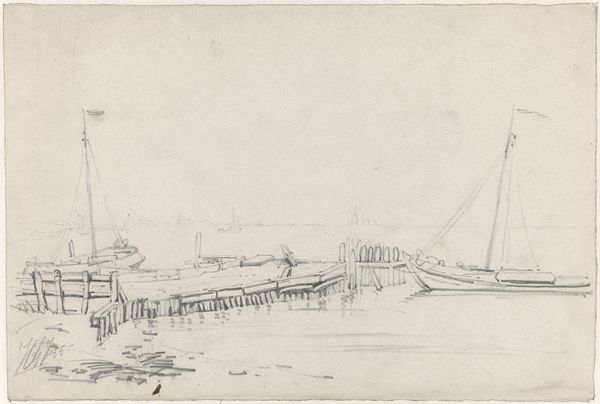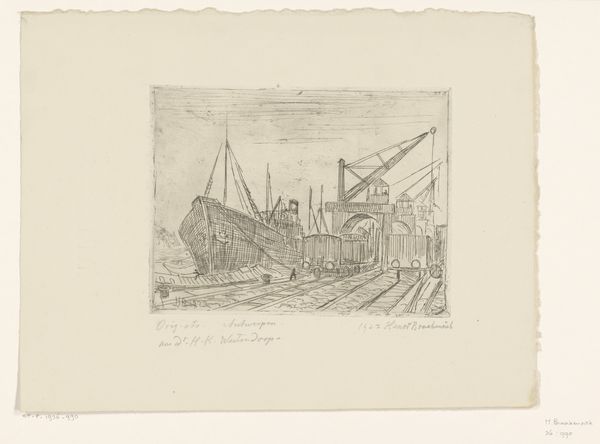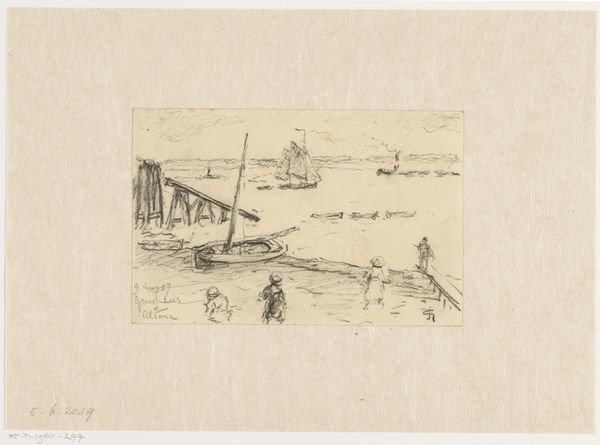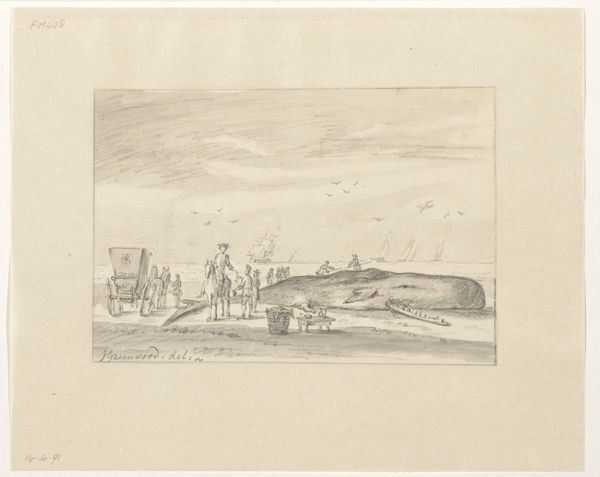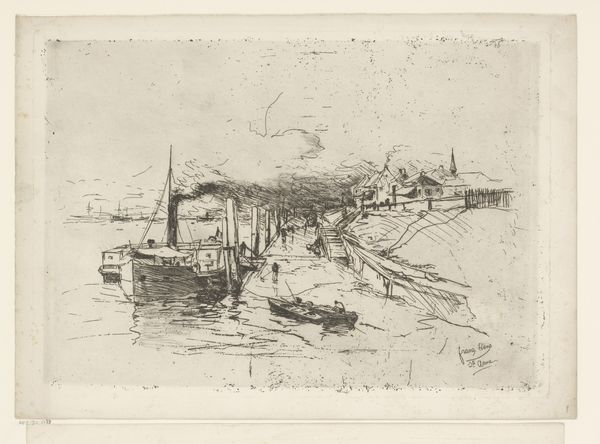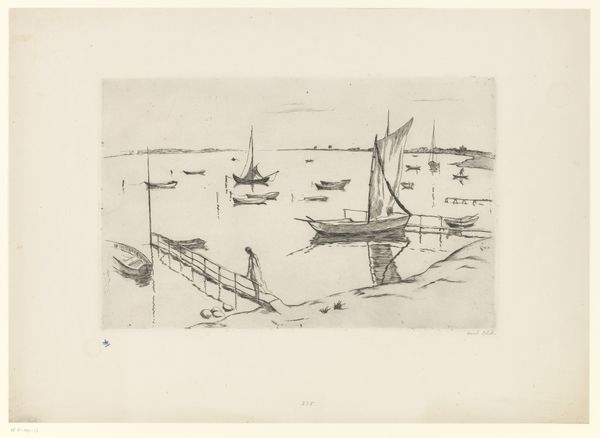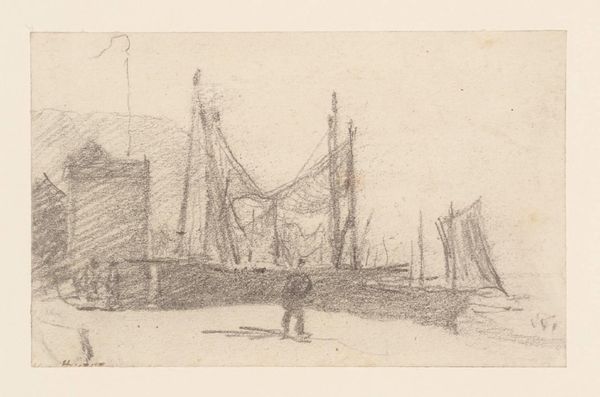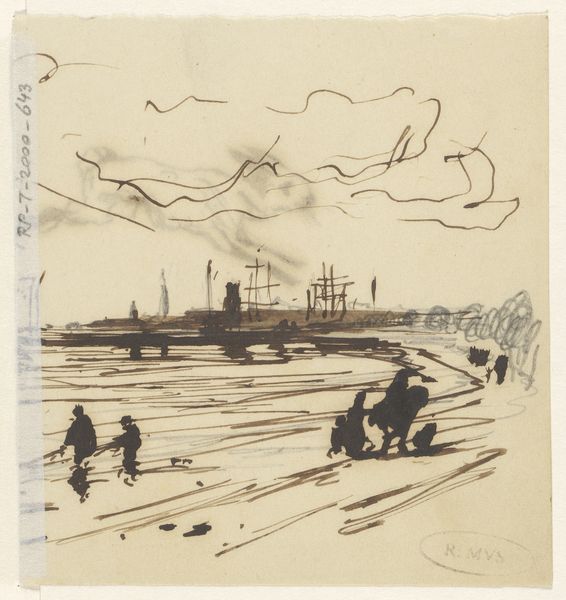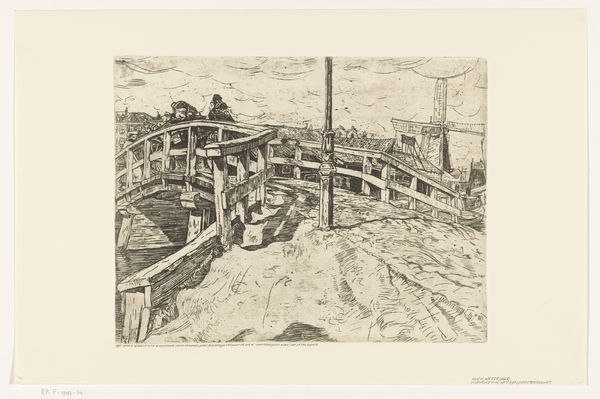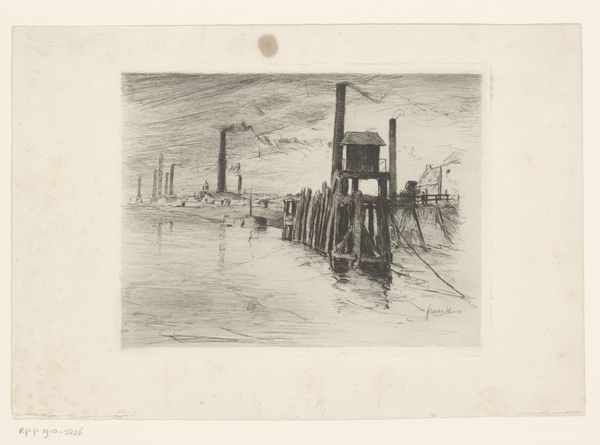
print, etching
#
16_19th-century
# print
#
etching
#
old engraving style
#
landscape
#
pen-ink sketch
#
cityscape
#
realism
Dimensions: height 100 mm, width 126 mm
Copyright: Rijks Museum: Open Domain
Curator: This is James Abbott McNeill Whistler's "Millbank," an etching from 1861, currently held at the Rijksmuseum. Editor: It's a gritty scene, immediately evocative of industrial London. The stark lines and limited shading give it a raw, almost urgent quality. Curator: Absolutely. Whistler was capturing the changing face of London, documenting the industrial growth and its impact on the urban landscape. The Thames, a vital artery, is central to the composition. Editor: I’m drawn to the process here, the sheer physicality of etching. Imagine Whistler hunched over his plate, manipulating acid to bite into the metal, controlling the density and depth of those lines to render such a complex view of the factories, the docks and the everyday activity along the Thames. Curator: It reflects a shift in artistic interests, moving away from romantic ideals towards a more realistic depiction of working-class life and urban development. Notice how the figures seem dwarfed by the scale of industry behind them, symbolic perhaps of the individual’s place within an ever-expanding, increasingly mechanized society. Editor: Precisely. And look how he varies the line quality to create atmospheric depth. The closer elements have thicker, bolder lines, and the background fades into this hazy wash. You can almost feel the dampness in the air. The tactile quality of this is wonderful—it gives such insight into the world that Whistler inhabited. Curator: The print was part of a series called the Thames Set, revealing the artist's fascination with this working river. We can look at this artwork through the lens of urban studies and the evolving representation of the city in the arts. Editor: To me, this speaks to a desire to understand the changing face of production through its physical embodiment in a singular object, it underscores the labor and materiality that defines so many art objects from the mid 19th century on. Curator: An insightful consideration that provides a window into that complex relationship between the maker and society. Editor: It is something truly evocative about his time that the medium allows us to grasp through the evidence of labour.
Comments
No comments
Be the first to comment and join the conversation on the ultimate creative platform.
